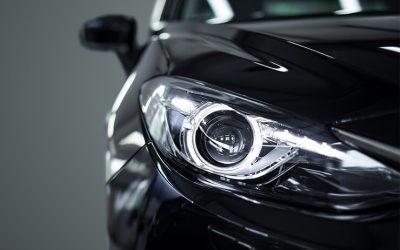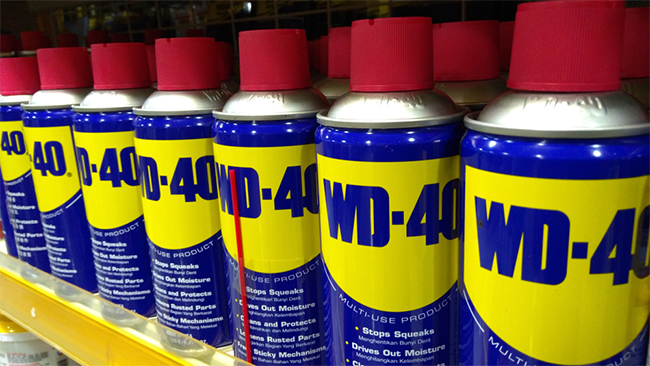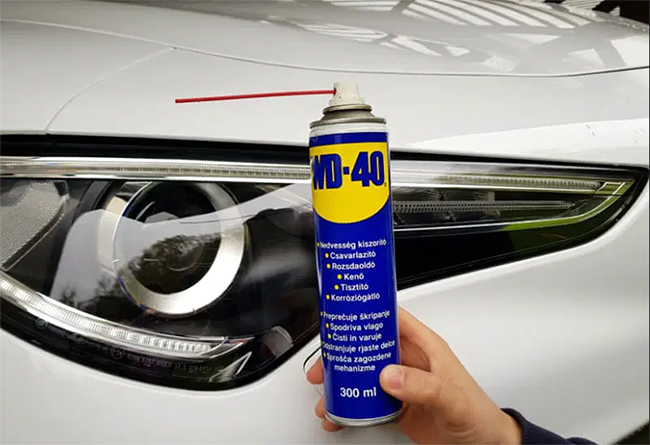Headlights have developed from the 60’s stock sealed glass beam to modern halogen, HID, and LED polycarbonate plastic headlight lenses. This advancement is excellent and cost-effective, but there is also a downside. The chemicals used in producing these polycarbonate plastic lenses react to UV lights, moisture, sun rays, and heat. Over time, these reactions will cause the car headlights to degrade and become foggy or yellowed in appearance. Yellowish headlight discoloration can be frustrating and affect your visibility while driving, especially at night.
In this blog, we will talk about cleaning your headlights with WD-40. Let's take a closer look at WD-40 to see how this product was used to restore our headlights to crystal clear and if it really is a good choice for headlight cleaning.
What Is Wd-40?
You may know WD-40 as the go-to product for removing stubborn rust and lubricating squeaky door jams. This groundbreaking product first hit shelves in 1958 and has become a beloved household item since then. During the Vietnam war, WD-40 was even used to help keep firearms in working condition. You can find more than 2,000 uses for this product on the WD-40 official website. Its multi-use attracts buyers nationwide and grew in value during the COVID-19 pandemic.
Can WD-40 Be Used to Clean Foggy Headlights?
The answer is YES. To defog your headlights with WD-40, please follow these easy steps:
Step 1
First of all, clean your headlights with water to remove any dirt and debris that may be lingering on the headlight lenses. This may seem unnecessary, but it will effectively prevent the grit and dirt from causing further damage by scratching your headlights. If you have access to a pressure washer, this is an ideal way to remove any residual grime from your headlights.
Step 2
Then, you need to dry your headlights. You can choose a towel, paper, or microfiber cloth. Make sure you can remove any traces of water and that your headlights are clean after this step. We recommend using a microfiber cloth as it can soak up any moisture present.
Step 3
You can spray WD-40 directly onto your headlights and leave it to sit for 60 seconds. You can also spray it onto a clean cloth and wipe your headlights with the cloth.
Note: Make sure your WD-40 has not been opened for more than 5 years, as it will be significantly less effective after that.
Step 4
Finally, wipe your headlights clean to remove any residue and excess WD-40. You'll notice that your headlights are as clean as the day you got your car! If you find that the results are not what you expected, you can repeat this process until your headlights improve. Make sure to repeat this step for both headlights.
However, like every other product ever on the market, WD-40 has its pros and cons when it comes to cleaning fog headlights.
Pros:
- Highly effective in removing dried stains on certain surfaces.
- Easy to access.
- Economical.
- Can be used on more surfaces than just headlight lenses.
- Easy to use.
Cons:
- Not a real lubricant for headlights in a sense.
- Can only be used on certain surfaces.
- Can cause permanent damage if used incorrectly.
Is WD-40 Really Good for Headlights?
Some would agree that cleaning car headlights with WD-40 is the most effective method, but some would object to this claim. After many tests, we found that the main weakness of WD-40 is its durability.
After using WD-40 to defog your car headlights, the effect can only last for about a day or two, and then the headlights go back to looking cloudy. This temporary fix only indicates that WD-40 is mainly a polishing tool rather than a headlight restoration product.
However, WD-40 can be very effective and durable when applied on other surfaces like tiles, metal, wood, ceramic, aluminum, etc. This can also explain why WD-40 is so easily accessible and popular in the market. It is more of a universal product and can be conveniently utilized for many other purposes.
Final Thoughts
WD-40 is a universal lubricant that has proven its effectiveness on cloudy headlights, door jams, and rusty surfaces. While it’s become a valued household item, it’s definitely not the best option for headlight cleaning and restoration. Actually, many car owners oppose using it. This is because overuse could cause oil leakage into the bulbs, thereby damaging the headlights completely. With this in mind, try using WD-40 just as your backup method. There are also some other home remedies for defogging your headlights, which include toothpaste, anti-grease dish soap, vinegar, or bug spray.
In a word, I would recommend buying one pair of new headlight assemblies for a more permanent solution. If you are looking for replacement headlights with unparalleled quality, Vehicleaid would undoubtedly meet and even exceed your expectation.
Need more information about headlight restoration? Check here:
How to Clean Headlights at Home
Headlight Restoration Vs. Replacement: What to Do About Foggy Headlights?




